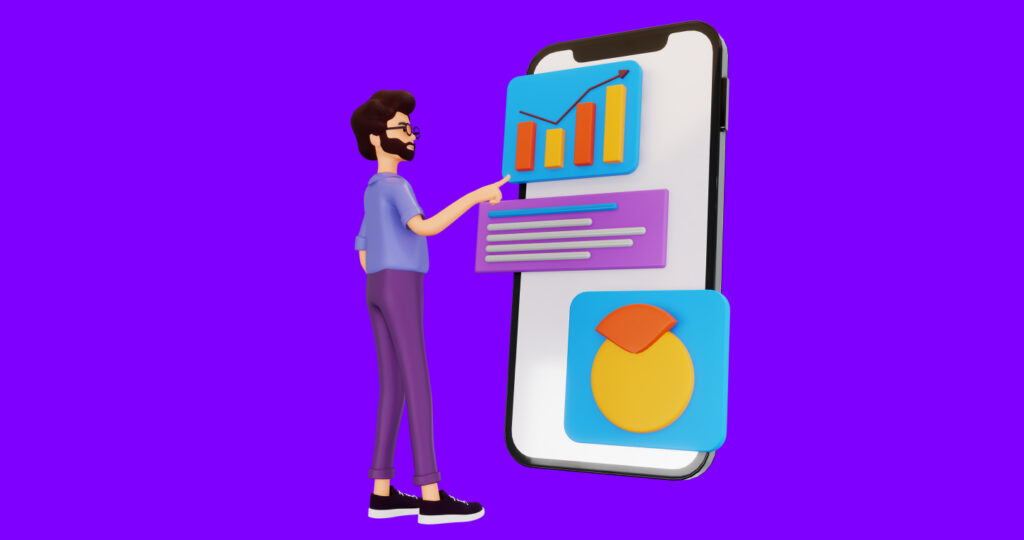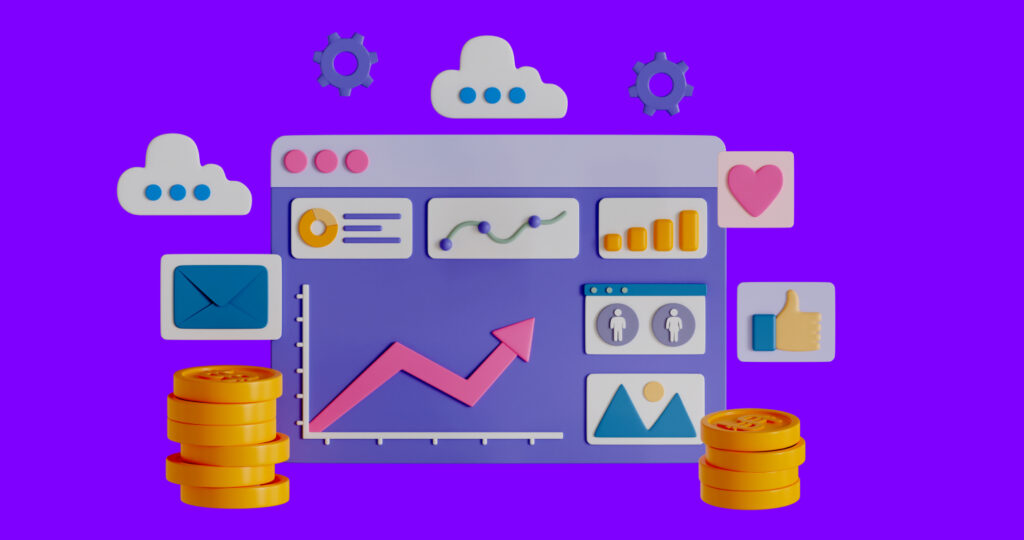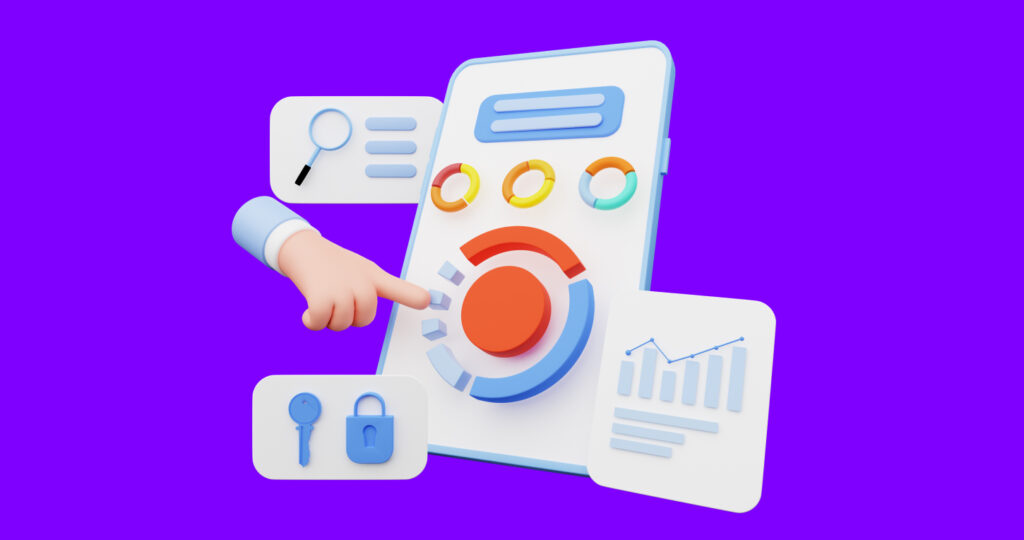Influencing others means impacting someone or something in a meaningful way. Historically, influencers might have been political leaders, presidents, or even peers within your network. Today, influencers can be individuals with a substantial following on social media platforms, making them valuable assets for many organizations’ marketing strategies.
Influencers have the power to affect potential customers’ behavior and raise awareness about a product or brand. When it comes to leveraging influencer marketing effectively, the key lies in collaborating with the right individuals—those who genuinely engage with your target audience and can produce authentic content that resonates with them.
As a startup founder or key decision-maker, how do you identify the right social media influencers to collaborate with for your business?
Explore Azarian Growth Agency’s influencer marketing guide, where we’ll delve into some of the essential aspects to consider when selecting influencers for your venture and provide insights into how you can discover the right partners.
What is Influencer Marketing?

If you use the most popular social platforms like Instagram, you most likely have come across the Kardashian clan, or stars like Gigi Hadid, and other influencers promoting their favorite products.
Influencer marketing is a type of social media marketing that uses endorsements from influential people on social media to promote your product or brand. This type of social media advertising helps you reach a wider audience than traditional advertising methods.
Why Having an Influencer Marketing Strategy is Important
Businesses earn an average of $5.78 for every dollar they spend on influencer marketing ( Source: Influencer Marketing Hub)
And though influencer marketing is relatively new, it’s become increasingly popular as more people use social media platforms.
As a result, businesses are investing more in influencer marketing campaigns to improve their bottom line. In fact, a staggering 93% of companies are now leveraging influencer marketing in some way.
Here are a few reasons why having an social media marketing strategy that includes influencers is important:
Reason #1: Influencers Can Help Increase Brand Awareness
As a seed or startup business, it can be difficult to gain traction and build brand awareness, especially when competing against more established companies. Partnering with influencers who have a large and engaged following in your niche can help you reach a wider audience and increase awareness of your brand.
By collaborating with influencers who align with your brand values and have a genuine interest in your product or service, you can tap into their existing network of followers and leverage their influence to gain visibility for your business.
Reason #2: Influencers Can Provide Valuable Insight and Feedback Influencers
They are often experts in their respective niches and have a deep understanding of their audiences. By working with influencers, you can gain valuable insight and feedback on your product or service, as well as your marketing strategy.
This can be particularly useful for seed and startup businesses that are still refining their offering and trying to establish their place in the market. By listening to feedback from influencers, you can make necessary adjustments and improvements to your business and marketing approach.
Reason #3: Influencers Can Help Drive Conversions
In addition to increasing brand awareness, influencers can also help drive conversions for your business. By partnering with influencers who have a highly engaged following, you can tap into their ability to influence purchasing decisions and drive traffic to your website or store. This can be particularly effective for seed and startup businesses that are looking to generate sales and revenue quickly.
By leveraging the trust and credibility that influencers have built with their followers, you can create a sense of urgency and excitement around your product or service, and ultimately drive conversions.
Reason #4: Influencers Can Provide Authentic Content and Credibility
In today’s social media landscape, consumers are increasingly savvy and discerning when it comes to advertising and marketing messages. They are more likely to trust recommendations from people they know, or from influencers who they perceive as authentic and credible.
By partnering with influencers who have a genuine interest in your product or service, you can create content that feels more authentic and less like traditional advertising. This can be particularly important for seed and startup businesses that are trying to establish trust and credibility with their audience.
Influencers can create content that showcases your product or service in a natural and organic way, you can build a more authentic brand identity and engage with your target audience on a deeper level.
So, if you’re looking for a cost-effective way to promote your product or brand, influencer marketing is an ideal choice.
Now that you have an idea of why influencer marketing is important, let’s explore how to go about finding the right influencers for your business.
The Types of Social Media Influencers

To identify influencers, you should first know the type of influencers available. There are three types of influencers you should consider:
- Nano influencers:
Nano influencers are social media users who have a small following, ranging from 1K to 10K. Despite having a smaller reach, nano-influencers have an engaged audience that trusts their opinion, making them great for local or niche campaigns.
- Micro-Influencers:
Micro-influencers have a slightly larger following, ranging from 10K to 100K. They are experts in their niche and well-respected by their audience. They are ideal for campaigns targeting a specific demographic or specialized product.
- Macro Influencers:
Macro Influencers have a large following, from 100K to 1M. These influencers can be celebrities or well-known personalities in their respective fields. They are great for campaigns that need a wide reach.
- Mega Influencers:
Mega influencers have a following of 1M or more. They are often celebrities, sports stars, or other well-known personalities who have a tremendous influence on their audiences.
- Celebrities:
Celebrities are the kings and queens of influencer marketing. They have millions of followers, often in different countries. In addition to their massive number of followers, celebrities have a lot of influence in their respective industries.

Influencer Marketing Examples
Now that you know how to create an influencer marketing strategy, let’s explore some successful influencer campaigns.
The 2020 Adidas x Beyonce collaboration was a great example of a successful campaign. Beyonce was the perfect partner for Adidas, as she had millions of followers and resonated with their target audience. The collaboration was a huge hit and the hashtag “adidasxBeyonce” became one of the most popular tags on Instagram.
Another example is the 2019 Nike x Serena Williams campaign. This collaboration between Serena Williams and Nike was an instant success as it resonated with their target audience, had high engagement rates, and generated a lot of positive buzz.
These examples show that influencer marketing can be an effective way to reach a larger audience and boost brand visibility.
Of course it’s difficult to jump to celebrity-level influencers, but there are plenty of other options that you can use to reach your target audience as well. With a bit of research and creative thinking, you can find the right social media influencer for your business and launch successful marketing campaigns.
With the right influencer strategy and marketing tactics your business can benefit from increased brand awareness, more conversions and sales, and better customer loyalty.
Head to the next section to discover how to select the right influencers for your campaigns!
9 Steps to Developing Your Influencer Marketing Strategy

Influencer campaigns are an excellent way to reach a larger audience, build trust with customers, and increase brand visibility. However, it’s important to find the right influencer for your business and create an effective strategy.
Here are 9 steps to help you craft a successful influencer marketing strategy:
Step 1: Define Your Goals
Before you begin working with influencers, it’s important to have a clear understanding of your goals and what you hope to achieve through your influencer marketing efforts.
Are you looking to increase brand awareness? Drive conversions? Build trust and credibility with your target audience?
Whatever your goals may be, it’s important to define them early on and use them to guide your influencer selection and campaign planning.
For startups and seed businesses, it can be particularly important to focus on goals that are aligned with your overall business objectives.
For example, if you’re a new e-commerce business, you may want to focus on driving sales and increasing your customer base. In this case, you might want to work with influencers who have a strong track record of driving conversions and have a highly engaged following in your target demographic.
Defining your goals early on can help you stay focused and make informed decisions throughout the influencer marketing process. It can also help you measure the success of your campaigns and make adjustments as needed to achieve your desired outcomes.
Step 2: Identify Your Target Audience (the 3 Rs of Influence)
The success of your influencer campaigns depends on the right target audience. To identify your target audience, you should consider the 3 Rs of influence:
Relevance – Is there a relevant connection between the influencer and your brand?
For instance, if you are a fitness brand, would it make sense to partner with an influencer who focuses on skincare?
Reach – Does the influencer have a large enough following to reach your desired audience?
For instance, if your target audience is people in the United States, does the influencer have a large enough US following?
Resonance – Is the influencer’s content resonating with your desired audience?
For instance, is the influencer’s content popular with people who have similar interests as your target audience?
Once you have identified a potential audience, you can start looking for influencers who match those criteria.
Step 3: Know the Rules of the FTC

Before you can start working with influencers, it is important to be aware of the rules and regulations set by the Federal Trade Commission (FTC).
The FTC has specific requirements for disclosure when it comes to endorsements. This means that influencers must clearly disclose any relationship they have with your business in their posts. For instance, if the influencer is being paid for their post, they must include a clear disclosure that it is sponsored.
If you’re in the US and you’re working with influencers, make sure that they follow these rules.
How to know if an influencer is following the rules?
You can check their posts for a disclosure. If you’re still in doubt, you can contact the influencer and ask if they are following FTC guidelines.
Step 4: Research Influencers and Compile a List

Once you have identified your target audience and are aware of the FTC guidelines, it’s time to search for potential influencers.
Start by researching influencers who match your criteria. Look for ones with a large following in your desired demographic.
Follow these steps to make your research easier:
• Use tools like BuzzSumo, Google Trends and Followerwonk to find influencers. (we’ll go over this in the next section)
• Check out websites that feature influencers in your niche. For example, if you’re a fashion brand, look for influencers on style websites.
• Look for posts with a lot of engagement (likes, comments, shares).
• Check the influencer’s profile to see if their content resonates with your target audience.
Once you have identified a few influencers, compile a list of potential partners for your influencer campaigns.
Step 5: Assess Relevance and Reach
Once you have identified a list of potential influencers, it’s time to assess their relevance and reach.
Start by researching their content and evaluating if it matches your desired audience. Are they talking about topics that are in line with what you offer? Do their followers engage with their posts?
Steps to analyzing an influencer’s content:
• Analyze the comments on their posts. In the comments section, you can find out if people are really interested in the influencer’s content or not.
• Check out their previous campaigns and assess how successful they were.
• Analyze their follower count and other metrics such as likes, shares, etc
• Check how often they post and what type of content they share. If they are active and regularly post relevant content, it’s a sign that they are well-liked by their followers.
• Analyze their followers and see if they match your target audience. If their followers are mostly males between the ages of 18-24 and you want to target females between 25-35, it’s probably not a good fit.
Step 6: Look at Engagement & Interaction

Engagement is one of the key factors to consider when selecting influencers. A high engagement rate indicates that the influencer’s content resonates with their followers and that they are trusted by them.
When looking at an influencer’s engagement, analyze metrics such as likes, comments, shares, etc. Also look at the level of interaction they have with their followers. Do they respond to comments and messages?
How to judge engagement rate:
• Analyze the type of content they post. Is it visual, engaging, or informative?
• Look at how often they post and whether their followers interact with their content.
• Check out if and how often they respond to comments or messages from their followers.
Step 7: Compare Costs & Outcomes

Once you have narrowed down your list of influencers, it’s time to compare costs and outcomes.
Compare the pricing of different influencers to see which one is the most cost-effective. Some influencers may offer a better deal than others, while some may give you access to more followers or better content.
For example, if you wish to market your jewelry brand, you can send a sample of your product to an influencer, and have them promote it in exchange for exposure.
How to make a cost-comparison:
• Compare different influencers’ rates.
• Check their previous campaigns to see if they have delivered on their promises.
• Analyze their engagement and content quality.
• Request references from past clients and ask them about their experiences with the influencer.
Step 8: Reach Out to Influencers
Once you have identified the right influencer for your campaign, it’s time to reach out. You can contact them via email or direct message on their respective social media platforms.
When reaching out to an influencer, make sure to explain why you want to collaborate with them and what kind of content you’d like from them.
What message should you include in an influencer outreach email?
• Explain why you’re reaching out and what your business does.
• Outline the objectives of your campaign and how it will help both parties.
• Detail what kind of content they will be providing.
• Include any other information such as pricing, deadlines, etc.
Step 9: Monitor Performance & Measure Results

Once your influencer campaign is underway, it’s important to monitor its performance and measure the results. Measurements can include metrics such as reach, engagement rate, conversions, etc.
You should also look at the comments on their posts to gauge how people are responding to your campaign. If people are talking positively about your product or brand, it means that your influencer campaign is a success.
How can you monitor an influencer’s performance?
• Make sure that the influencer is following all disclosure guidelines.
• Track their posts and engagement rate.
• Check if they are posting content as per your agreed-upon timeline.
• Analyze the comments on their posts to see how people are responding to your campaign.
• Monitor the conversions to see if people are buying or signing up after seeing the influencer’s post.
Top Tools Used for Influencer Marketing in 2023

After creating and planning your influencer marketing campaign, it’s time to select a relevant tool!
An influencer marketing platform ca help you manage and track your influencers, identify new partners, and measure the success of each campaign. Here are some of the top tools used for influencer marketing in 2023:
1. Buzzsumo
This tool is great for researching influencers with the most reach and engagement. It helps you find influencers based on your keyword or niche, so you can quickly create a list of potential partners.
Pros:
• Easily filter influencers by reach, engagement, and content type.
• Track social media posts in real time.
• Analyze content performance and engagement rate.
Cons:
• The free version only allows you to search influencers by keyword or niche.
• No automated outreach tools.
2. Klear
Klear helps you manage and track multiple influencers in one place. It allows you to access detailed analytics, create campaigns, and measure their performance.
Pros:
• In-depth insights such as follower growth rate, engagement rate, audience demographics, etc.
• Detailed database of over 1 million influencers.
• Analyze influencer performance in real time.
Cons:
• The free version only allows you to search for up to 10 influencers.
• No automated outreach tools.
3. Traackr
Traackr helps you manage and track influencers from the early stages of research to post-campaign measurement. It allows you to create campaigns, measure results, and connect with potential partners.
Pros:
• Track influencer performance in real time.
• Access detailed insights into content performance.
• Identify new influencer opportunities.
Cons:
• No free version.
• No automated outreach tools.
4. NeoReach
NeoReach is a powerful influencer marketing platform that helps you identify and connect with relevant influencers. It also offers insights into content performance, audience engagement, and more.
Pros:
• Real-time monitoring of campaigns and influencer performance.
• Detailed analytics such as reach, engagement, audience demographics, etc.
• Automated outreach tools to simplify the process of reaching out to potential partners.
Cons:
• No free version.
• The user interface is a bit complicated.
5. INFLCR
INFLCR is a great tool for brands and athletes who want to collaborate with influencers. It helps you manage campaigns, track performance, measure results, and create reports.
Pros:
• Detailed analytics such as reach, engagement, audience demographics, etc.
• Automated outreach tools to simplify the process of reaching out to potential partners.
• Create custom reports for each campaign to measure success.
Cons:
• No free version.
• The user interface is a bit complicated.
6. TapInfluence
TapInfluence is a great platform for finding and managing influencers. You can use it to search for relevant partners, track performance, measure results, and create reports.
Pros:
• Detailed analytics such as reach, engagement, audience demographics, etc.
• Automated outreach tools to simplify the process of reaching out to potential partners.
• Create custom reports for each campaign to measure success.
Cons:
• No free version.
• The user interface is a bit complicated and not very intuitive.
7. HYPR
HYPR is a great tool for finding and managing influencers. It helps you search for relevant partners, measure performance, track results, and create custom reports.
Pros:
• Detailed analytics such as reach, engagement, audience demographics, etc.
• Automated outreach tools to simplify the process of reaching out to potential partners.
• Create custom reports for each campaign to measure success.
Cons:
• No free version.
• The user interface is a bit complicated and not very intuitive.
Start Planning Your Influencer Campaign Successfully

Judging influencer posts, assessing the relevance and reach, comparing costs, reaching out to potential partners – all this can seem overwhelming. But with the right tools and strategies in place, it doesn’t have to be!
Just remember the following key ideas:
• Make sure to research potential influencers and assess their relevance and reach.
• Compare different influencers’ rates and look at their previous campaigns.
• Track performance and measure results to see if your campaign is successful.
• Use the right tools for managing and tracking influencer campaigns.
By following a few key steps, such as defining your goals, selecting the right influencers, and creating authentic content, startups can effectively leverage the influence and reach of social media influencers to reach a wider audience and establish their brand in the market.
However, it’s important for startups to approach influencer marketing with a clear strategy and realistic expectations. Success in influencer marketing often requires a long-term, sustained effort and a willingness to adapt and refine your approach over time.

